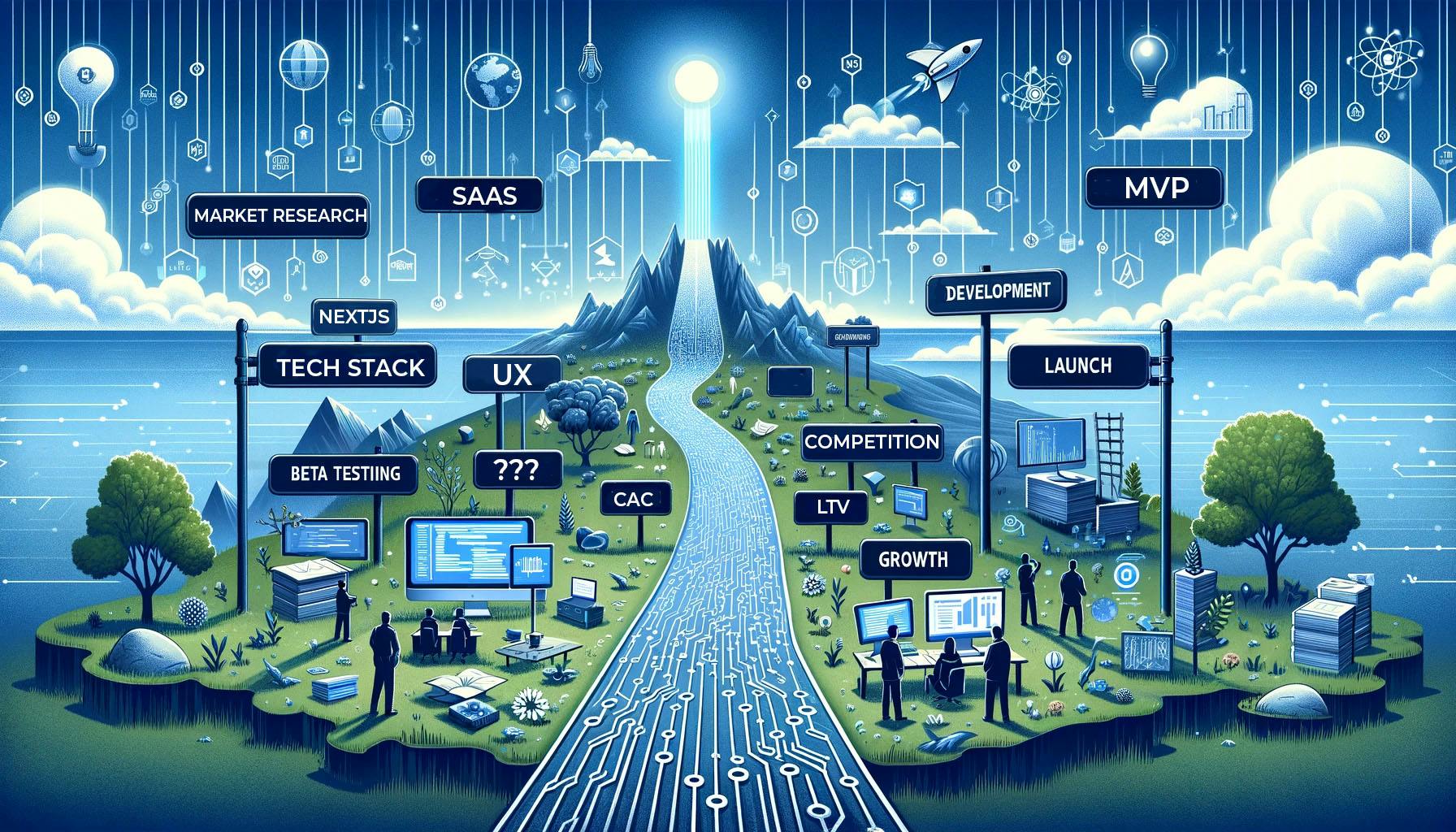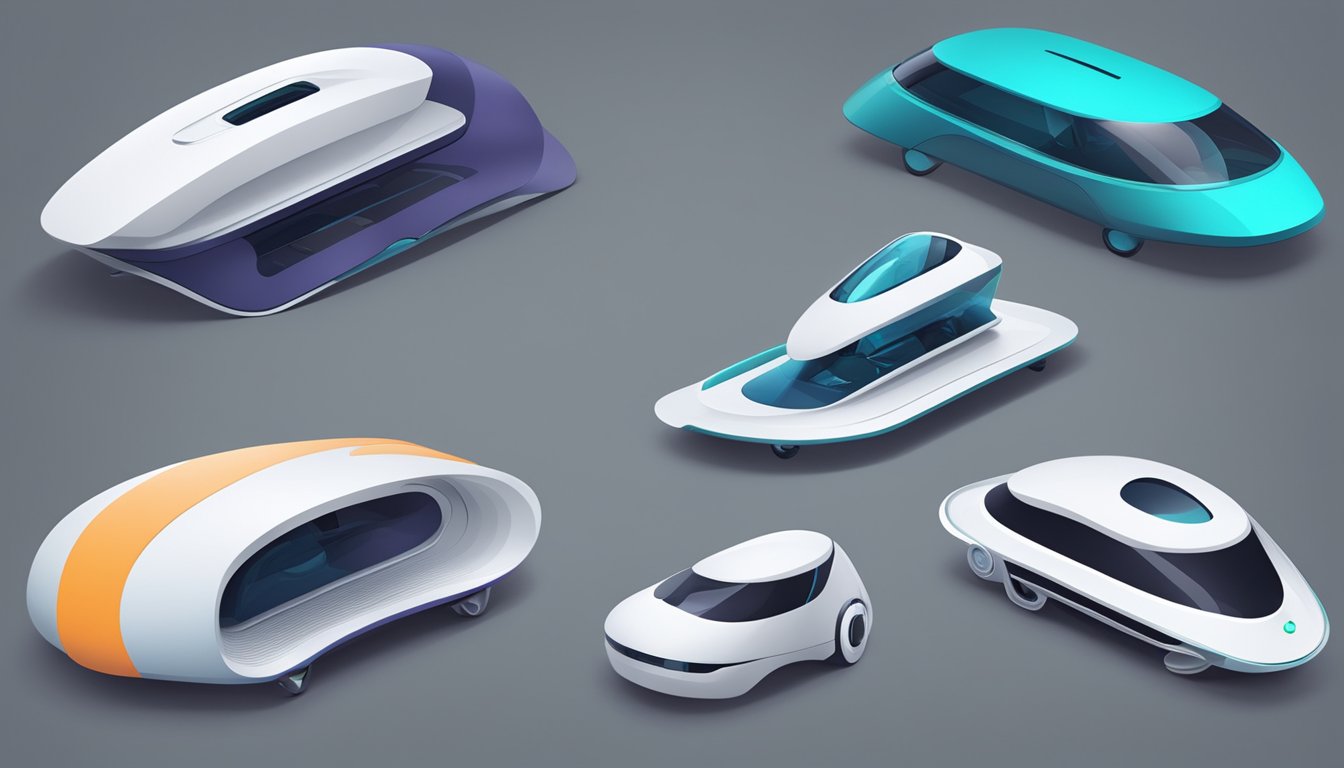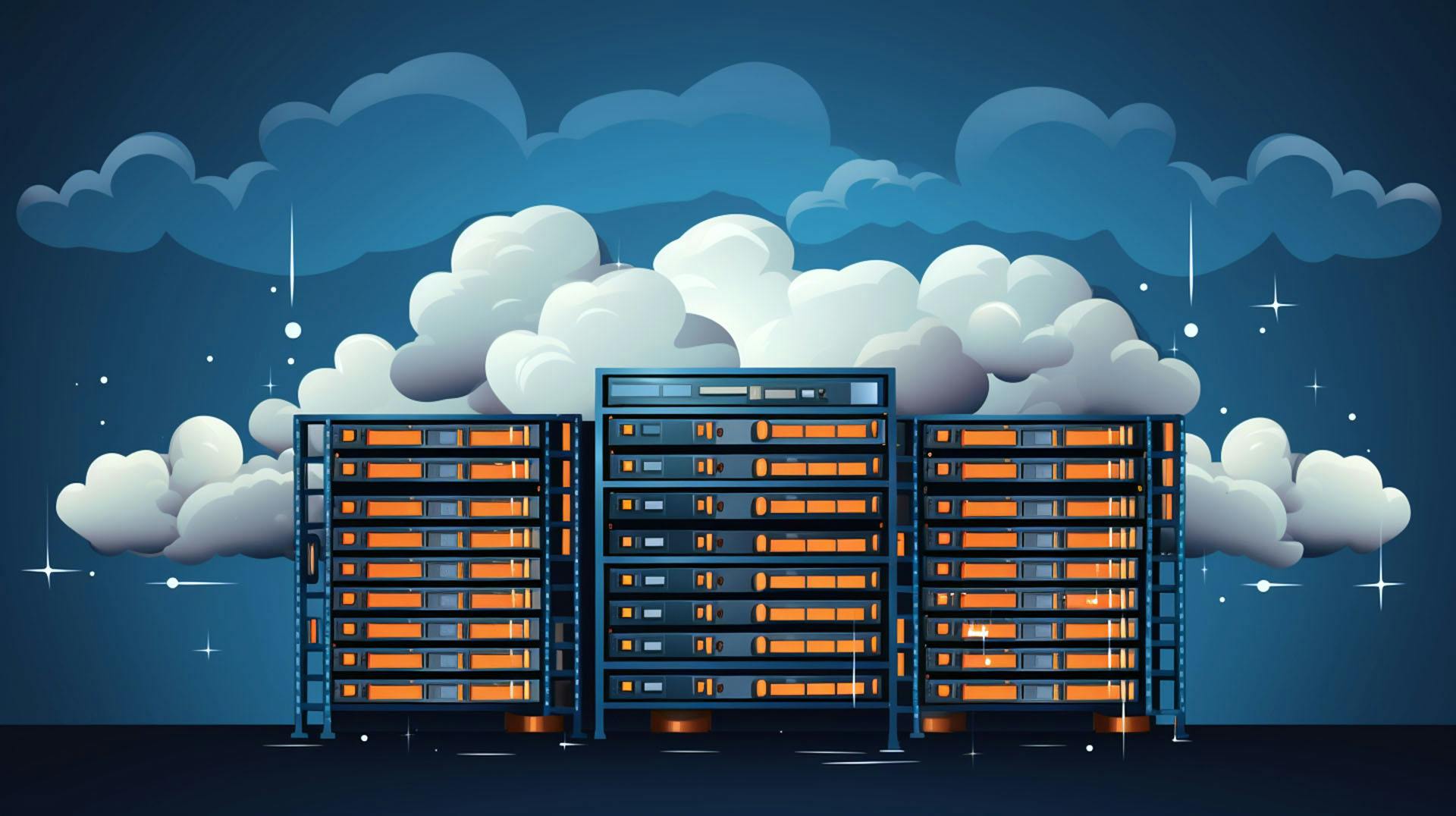Building a Micro SaaS in 2024: A Roadmap for Entrepreneurial Software Engineers

As a software engineer with an entrepreneurial streak, I’m always looking for original Micro SaaS ideas that can help me build a successful business. A Micro SaaS can provide some of the best returns on the time we invest for people with software engineering skills. With 2024 just around the corner, it's time to start exploring some of the most promising Micro SaaS ideas that could make a mark in the industry. Or at least on my income stream? In this article, I’ll explore ten original Micro Saas ideas I’m considering building in 2024 if I manage to make the time between my full-time job and my YouTube channels. (#OhWell…) and the different questions you must consider if you decide to go down that road.

First: What is a “Micro SaaS” (And Why Launch One) ?
A micro SaaS, or Software as a Service, is a type of small, niche-focused, and often self-funded online business. These businesses typically offer a specialised software product or service, catering to a specific market or need, and are usually operated by a small team or even a single individual. For software engineers with entrepreneurial aspirations, investing in a micro SaaS can be particularly appealing for several reasons:
- Low Overhead and Initial Investment: Unlike traditional startups, micro SaaS businesses often require minimal upfront capital. They can be started and grown incrementally, allowing for a more manageable financial commitment.
- Flexibility and Independence: Operating a micro SaaS offers a high degree of autonomy. Engineers can leverage their skills to build and scale the business on their terms, often working remotely and setting their own schedules.
- Niche Market Focus: By targeting specific niches, micro SaaS products can quickly become essential tools for a particular set of users. This focus allows for a deeper understanding of customer needs and the creation of highly tailored solutions.
- Scalability: Despite their small size, micro SaaS businesses can be highly scalable. Automation and cloud-based technologies enable these businesses to serve many customers without a corresponding increase in costs or resources.
- Recurring Revenue Model: SaaS products typically operate on a subscription basis, providing a steady, predictable income stream. This model can lead to long-term financial stability for the business.
- Learning and Growth: Building a micro SaaS offers a hands-on opportunity to learn about various aspects of running a business, from product development to marketing and customer service. This experience can be invaluable for personal and professional growth.
In summary, for software engineers looking to venture into entrepreneurship, micro SaaS businesses represent a practical and potentially rewarding avenue. They offer a unique blend of technical challenges, business acumen, and lifestyle flexibility, making them an attractive option for those looking to build and grow their own enterprise.
So, how can we go about that? Let’s dive in!
Market Analysis for Micro SaaS
I like the idea of building a Micro SaaS business. There are several reasons for that:
- low overhead costs,
- scalability potential,
- and ease of entry.
Part of that is that, as software engineers, we hold a core skill required to build the software.
However, before building a Micro SaaS, it can be useful to research the potential so that you don’t waste your time and energy building something no-one wants. I tend to look at my own needs, build a tool that meets those needs, and then think about transforming that into a product. That runs the risk of having an audience of one (and an unpaying audience, at that).
How can we validate that the idea has legs, i.e. that there it makes sense to build it ? First, we need to do some research. This involves three simple steps
First, identify Niche Markets
The first step in market analysis for Micro SaaS is identifying niche markets. This does not need to be overly complicated. The main question is: “Who is my ideal customer?”. And “What needs and preferences do they have that are not adequately met by existing products or services?” It’s worth writing down a description of our ideal client using demographics, psychographics, and behaviour. (Demographics is stuff like age, gender and the like. Psychographics are the psychological traits such as desires, aspirations, interests, opinions and personality in general) This helps understand the target audience's pain points and identify gaps in the market that Micro SaaS solutions can fill.
Second, Understand Your Ideal Customer’s Pain Points
The next step is to understand your target audience's pain points. Pain points are specific problems or challenges that customers face daily, and they are the primary drivers of demand for Micro SaaS solutions. To understand customer pain points, the best thing is often to ask. You can conduct surveys, interviews, and focus groups with your target audience. Or you can also ask ChatGPT to get a leg up: describe your ideal customer to it and ask it what it thinks their pain point is. This research helps develop Micro SaaS solutions that address our (potential) customers' most pressing needs.
Third, a Competitive Landscape Overview
The final step is to conduct a competitive landscape overview. This involves researching existing solutions and identifying their strengths, weaknesses, opportunities, and threats. This research helps understand the competitive landscape (is the competition cutthroat, or is no one else addressing the market ?) and develop Micro SaaS solutions that differentiate themselves from existing solutions.
By identifying niche markets, understanding customer pain points, and conducting a competitive landscape overview, you can make sure you are developing a solution that meets your target audience's needs and stands out in a crowded market.
Technical Considerations
When building a Micro SaaS, several technical questions need to be worked out early on, because taking a badly thought out direction will end up being costly. This includes choosing the right tech stack, managing scalability and security essentials, and APIs and third party integrations.
Choosing the Right Tech Stack
Choosing the right tech stack is crucial when building a Micro SaaS product. The tech stack should be chosen based several criteria. Fashionable tech isn’t one of them 😀 The tech you choose needs to:
- Meet your audience’s needs
- Ensure that the product is scalable, secure, and efficient.
- Allow rapid iteration
- Allow long-term maintainability
The last point is often overlooked when we (as software engineers and entrepreneurs) consider our tech stack. I tend to favour tools that I want to try out, the “shiny object syndrome”. The problem is that in the long term, if you need to grow, you need to be able to delegate at least part of the software development, and that means finding people who are proficient and that you can hire at a reasonable price. So fun and exciting new frameworks and technologies aren’t always a good fit.
Choosing a tech stack involves selecting a programming language, frameworks, libraries, databases, and even the hosting environment. Popular tech stacks for Micro Saas products include :
- Ruby on Rails,
- Node.js (either with a Nest backend and a front-end framework or with a NextJS full-stack environment) or
- Python.
- PHP can also be a solid choice, even though it is less in vogue now.
Scalability and Security Essentials
Scalability and security are two essential considerations when building a Micro Saas product. Scalability ensures that the product can handle increased traffic and users without slowing down or crashing. Security ensures that the product is protected against cyber threats and data breaches.
To ensure scalability, it is important to choose a cloud-based hosting platform that can handle the expected traffic and users. Security measures such as SSL certificates, firewalls, and encryption should also be implemented to protect the product and its users. The authentication you set up needs to be solid, which often means building on a third-party integration.
APIs and Third Party Integrations
APIs and integrations are important considerations when building a Micro Saas product. APIs allow the product to communicate with other software and services, while integrations allow the product to be integrated with other platforms.
When choosing APIs and integrations, DX is key. Some popular APIs and integrations for Micro Saas products include Stripe for payments, Twilio for messaging, and Zapier or Make for automation.
Overall, when building a Micro Saas product, it is important to consider these technical considerations to ensure that the product is scalable, secure, and efficient. By choosing the right tech stack, implementing scalability and security measures, and choosing the right APIs and integrations, software engineers can build successful Micro Saas products for their entrepreneurial ventures.
We help you better understand software development. Receive the latest blog posts, videos, insights and news from the frontlines of web development
Micro SaaS Ideas
Here are ten original micro SaaS ideas that software engineers with an entrepreneurial streak can consider building in 2024:
1. Automated Content Curation Platform
An automated content curation platform can help businesses and individuals save time by curating relevant articles, videos, and social media posts. The platform can use machine learning algorithms to learn the user's interests and preferences and provide personalised content recommendations.
2. Freelancer Client Management Tool
A freelancer client management tool can help freelancers manage their clients more efficiently. The tool can include features such as project management, invoicing, time tracking, and communication.
3. Personalised Learning Plans App
A personalised learning plans app can help students and professionals create a customised learning plan based on their goals and interests. The app can suggest relevant courses, books, and videos and track users’ progress.
4. Subscription-Based Wellness Tracker
A subscription-based wellness tracker can help individuals track their fitness, nutrition, and mental health. The tracker can provide personalised recommendations based on the user's goals and preferences.
5. B2B Lead Generation Service
A B2B lead generation service can help businesses generate qualified leads for their sales team. The service can use data mining and machine learning algorithms to identify potential customers and provide contact information.
6. Eco-Friendly Living Advisor
An eco-friendly living advisor can help individuals and businesses reduce their carbon footprint and adopt sustainable practices. The advisor can provide personalised recommendations based on the user's lifestyle and preferences.
7. Virtual Interior Design Consultant
A virtual interior design consultant can help individuals and businesses design their spaces more efficiently. The consultant can provide 3D visualisations, product recommendations, and cost estimates.
8. Remote Team Building Activities Hub
A remote team-building activities hub can help businesses organise virtual team-building activities for their remote teams. The hub can include features such as icebreakers, games, and challenges.
9. On-Demand Personal Shopper
An on-demand personal shopper can help individuals save time by shopping for them. The shopper can use machine learning algorithms to learn the user's preferences and provide personalised recommendations.
10. AI-Powered Business Analytics Tool
An AI-powered business analytics tool can help businesses make data-driven decisions. The tool can use machine learning algorithms to analyse large datasets and provide insights and predictions.
These are just a few examples of the many micro SaaS ideas that software engineers can consider building in 2024. With the right idea and execution, a micro SaaS product can be a profitable and fulfilling business venture.
Business Model Framework

When building a Micro SaaS product, it is essential to have a solid business model framework in place. This framework should be designed to maximise profitability while also ensuring that the product is sustainable in the long term.
The Core Formula: CAC vs LTV
At the heart of every online business, and of Micro SaaS businesses in particular, is the CAC vs LTV formula. Basically, it works like this
Marginal Profit = LTV - CAC
Let’s unpack that for a second.
LTV is the Lifetime Value, the revenue a customer generates for your business over their whole lifecycle
CAC is the Customer Acquisition Cost , i.e. the amount you need to spend to gain one.
Therefore the profit you make per customer is the difference between the two. Now obviously this ignores other “details” like the cost of running the service per customer, so a better formula would be
Marginal Profit = LTV - (CAC + Maginal Operational Costs)
… where the marginal operational costs represent what it costs you to provide the service for one additional customer (and here one of the main advantages of a Micro SaaS model is that those cost can be low if you make the right technical and technological choices)
Let’s dive in to the different elements that impact this core formula.
Pricing Strategies
Pricing is a critical component of any business model and impacts your LTV. The goal is to maximise revenue while ensuring the product is accessible to potential customers. The pricing strategy should be based on the (perceived) value that the product provides to the customer.
One popular pricing strategy for Micro Saas products is the freemium model, which helps with the Cost of Customer Acquisition (CAC) in the core formula. This involves offering a basic version of the product for free, with additional features available for a fee. Another pricing strategy is the tiered model, where customers can choose from different pricing tiers based on their desired features.
Customer Acquisition Channels
Customer acquisition is a critical component of a Micro Saas business model. It is important to focus on channels that are both cost-effective and efficient - as this strongly impacts the CAC side of the core equation.
One customer acquisition channel you might find effective is content marketing. This involves creating high-quality content that is relevant to potential customers and sharing it on social media and other platforms.
I’ve also found Search Engine Marketing (or SEM), e.g. Gogle Ads, to be effective. This involves using targeted ads to drive traffic to the product's website. Here finding the right keywords to target is key, ideally you need to target those that express the need your solution meets.
Finally, Search Engine Optimisation (or SEO) can also be an interesting strategy. It takes longer to be effective but it can be cheaper, because it generates organic (i.e. free) traffic. It involves producing content for search engines to pick up and promote, so it isn’t completely free but it can be a core component of long term sustainable growth.
Retention and Growth Tactics
Retention and growth are crucial for the long-term success of a Micro Saas product, and they play a big role in LTV. Retaining customers involves providing a excellent User Experience (UX), customer service and support.
To encourage growth, it is important to focus on product development and innovation. This can involve adding new features, improving existing features, or expanding the product's capabilities. Here, once again, it is important to focus on customer feedback and needs and use that to inform product development and marketing strategies.
Overall, a solid business model framework is essential for the success of a Micro Saas product. By focusing on the core equation and the pricing strategies, customer acquisition channels, and retention and growth tactics that impact it, software engineers with an entrepreneurial streak can build a profitable and sustainable Micro SaaS business.
Development and Launch

Once the Micro SaaS idea has been validated on paper, the next step is to validate it in practice. This is done by developing and launching a Minimum Viable Product, or MVP. Here are some key steps to follow:
MVP Development Roadmap
The Minimum Viable Product (MVP) includes only the essential features required to solve the customer's problem. The goal is to make sure there is a market fit, i.e. that we are meeting a need, and there is a demand for a product. Here we need to focus on
Beta Testing and Feedback Collection
Before launching the Micro SaaS product, you need to conduct beta testing to collect feedback from early adopters (typically using Typeform or Tally or direct interviews). This feedback should be used to improve the product and fix any bugs or issues. You also also need to set up a feedback loop to continuously gather feedback from customers and iterate the product roadmap accordingly.
It's important to keep iterating the product roadmap based on customer feedback and market trends to stay ahead of the competition.
Launch Marketing Strategies
A successful launch might need a marketing strategy that includes a mix of inbound and outbound marketing tactics. This can include a product launch announcement, social media campaigns, content marketing, and email marketing.
Post-Launch Strategies

After launching your product product, it is important to have a solid post-launch strategy in place to ensure the product's success. Here are some key areas to focus on:
User Engagement Metrics
Measuring user engagement metrics is crucial to understanding how well the product is resonating with users. Metrics such as daily active users, retention rate, (i.e. how often your users come back) and churn rate (i.e. what percentage of users leave) can provide valuable insights into how users are interacting with the product. Monitoring these metrics helps identify areas for improvement and make data-driven decisions to increase user engagement.
Feature Updates and Iterations
As users begin to interact with the product, it is important to listen to their feedback and make necessary updates and iterations. This can involve adding new features, improving existing ones, and fixing any bugs or issues that arise. By keeping the product up-to-date and responsive to user needs, you can build a loyal user base and increase overall satisfaction.
Customer Support and Community Building
Providing excellent customer support is key to building a strong reputation and retaining users. This can involve setting up a support system such as a helpdesk or chatbot, as well as responding to user feedback and questions in a timely and helpful manner. Additionally, building a community around the product can help to foster engagement and loyalty among users. This can involve creating a forum, social media group, or other online space for users to connect and share their experiences.
By focusing on these key areas, you can ensure the long-term success of their product and build a loyal user base.



